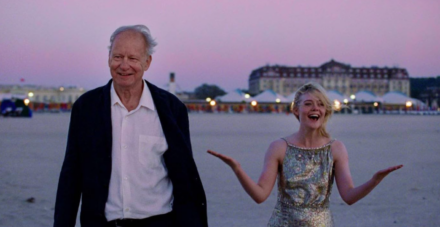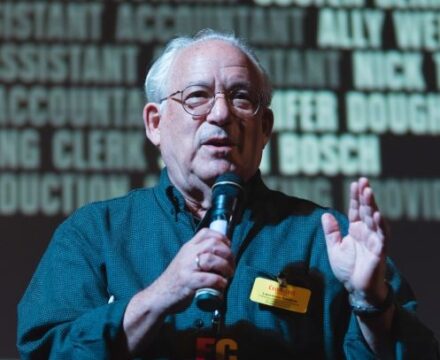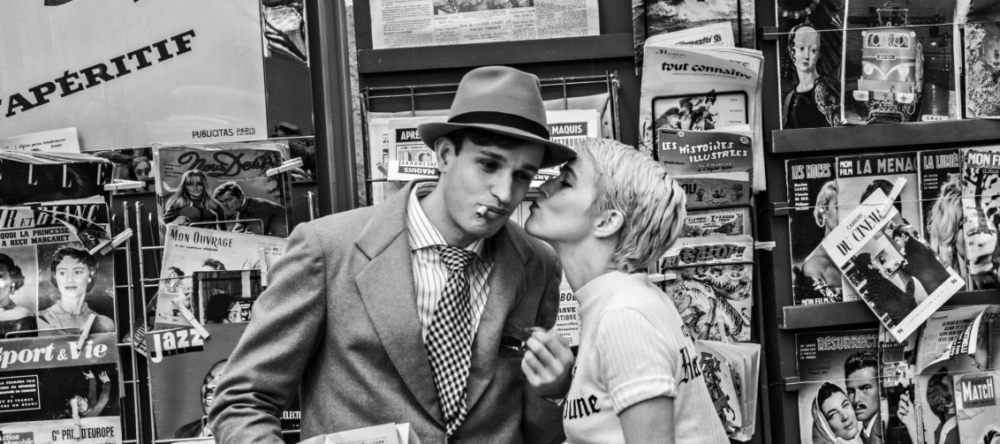by Larry Kardish
Cannes is the mother of all film festivals. Not only because of where (on the Cote d’Azur) and when (mid-spring) it takes place, but because, at its core, Cannes is a festival for film professionals. Unlike most other festivals, which serve the citizens of their locations, Cannes requires anyone who attends its Official Selection to be accredited. If in its Paris office the organizers of the festival grant an accreditation (there are more applications than accreditations) to someone as a professional in a particular cinema field (actor, director, producer, writer, press, film festival organizer, etc.), then that person is invited, free of charge, to attend screenings. Free of charge is nice, but one still has to get to the south of France, only to find both accommodation and food, especially in Cannes itself, quite pricey.

The Competition is the hub of Cannes’ “Official Selection” from which other programming spokes emerge, including premieres of films not in competition; a specific selection of films by newer filmmakers; short films and student films; restorations of films over twenty-five years old; films shown nightly on the civic beach that are free to all; and a selection of “immersive” works that requires its own building and viewing devices. There is also the Market (Marché du Film), to which anyone in the industry can buy a pass, and people do, in the thousands. The Market is where much of the business of selling and buying takes place and where many more films than those in the Official Selection are shown in small screening rooms to potential distributors or investors.
In addition to all this there are three significant parallel international festivals taking place simultaneously in Cannes, each in its own separate location, each open to anyone accredited to the Festival and also to the Cannes public who may buy individual tickets to screenings. The organizers of the festival, toward the end of Cannes’ ten-day run, invite students and other cinephiles to enjoy the festival’s final days with a new batch of accreditations and tickets. If this seems somewhat confusing, that’s because it is; the parameters of attendance seem to change annually. No one is ever told about the changes in advance. In other words, attending this festival is NOT a simple matter. One cannot just show up: you need an accreditation badge to enter the Palace of Festivals and Congresses where the Official Selection films are shown with superlative projection and sound.

This year saw films from Brazil (Keber Mendoca Filho’s The Secret Agent), China (Bi Gan’s Resurrection), France (Oliver Laxe’s Sirat, shot in Morocco and Spain, and Hafsia Herzi’s The Little Sister), Germany (Mascha Schilinski’s Sound of Falling), Iran (Jafar Panahi’s Just an Accident), Iraq (Hasan Hadi’s The President’s Cake), Nigeria (Akinola Davies Jr.’s My Father’s Shadow) and Norway (Joachim Trier’s Sentimental Value, starring Stellan Skarsgård, Renate Reinsve and Elle Fanning), win the major awards. Other films I thought distinguished were Fatih Akin’s Amrum, about an adolescent on a small German North Sea island in the waning days of World War II; Ukrainian filmmaker Sergei Loznitsa’s meticulous drama, Two Prosecutors, in which a young Soviet lawyer seeks justice during the height of Stalin’s purges in 1937; the Dardennes Brothers’ humanist drama, Young Mothers, set in a caring facility for girls giving birth in Liege; and Simon Mesa Soto’s comic and sad A Poet, about a middle-aged “poet” who, divorced, and still living with his mother in Medellin, tries, with disastrous results, to mentor a student.
Several American films also premiered at Cannes. Many were liked but none were big prize winners. One American film I thoroughly enjoyed, however, is the perky and charming feature, Nouvelle Vague (above top), by the prolific and genre-jumping independent Texas filmmaker, Richard Linklater. It is in French (with English subtitles) and in black-and-white – just like Jean-Luc Godard’s first feature film, Breathless (À Bout de Souffle, starring Jean-Paul Belmondo and Jean Seberg), whose making in 1959 Linklater breezily recreates.
The good news is that virtually all these films have been acquired for US distribution, and since all of them are potential end-of-the-year award winners, they will likely be available to make FilmColumbia a most thrilling international film festival, perfect for inaugurating the restored Crandell.

Larry Kardish, senior curator emeritus for film and media at New York’s Museum of Modern Art, teaches in the masters of directing program at School of Visual Arts in New York. He is Co-Executive Director and Co-Artistic Director of FilmColumbia, and yearly brings the world’s best and latest films to Chatham.


